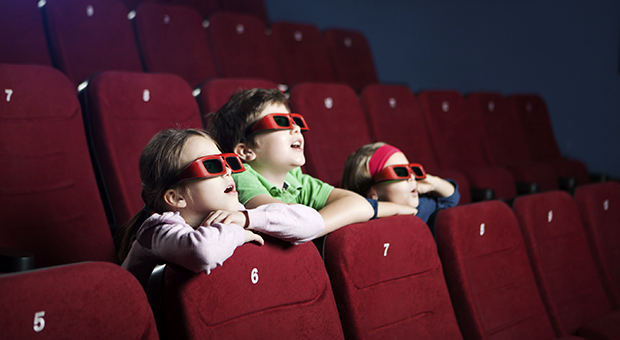The Medical Minute: Are 3D movies and games bad for your eyes?

Have you read the warnings on a 3D television or gaming system? “Can cause altered vision, lightheadedness, twitching, nausea, disorientation… children and teenagers may be more susceptible to health issues… pregnant women and the elderly should avoid…”
It may make you wonder if the product should be used at all and if the ever-increasing amount of 3D movie options in the theater is safe.
Through these disclaimers, companies may have been scaring away the customers they seek, as medical evidence does not back up the claims.
Professionals like ophthalmic photographer Timothy Bennett, C.R.A., F.O.P.S., of Penn State Hershey Eye Center know there are no health issues associated with 3D imaging and use this technology safely on a daily basis without issue.
The eyes are separated by just enough distance so each eye sees from a slightly different vantage point. The brain receives information from each eye individually and that creates a sense of depth or stereopsis. A 3D image is an attempt to re-create that on screen.
Some viewers commonly experience headaches, nausea and dizziness while trying to 3D, but these are temporary.
“When we are looking at the natural world, the eyes, the muscles in the eyes that allow us to focus, and the muscles that move the eye work in tandem,” Bennett said. “With 3D viewers or 3D movies, we’re now asking the muscles to work separately.”
Changes in the muscles’ normal relationship causes strain and fatigue that can cause a headache. Nausea and dizziness can occur as scenes change quickly, which does not occur in reality.
“It can be slightly disorienting like motion sickness — like staring out a car window,” Bennett said. “As soon as you stop looking at 3D it should clear up.”
According to Bennett, the American Association of Pediatric Ophthalmology and Strabismus and the American Academy of Ophthalmology say there are no known studies on long-term effects or potential damage on a person’s vision.
“The general consensus is that it’s safe,” he said. “If you get headaches, get a little queasy or get eye strain, limit your use of the technology.”
Over the years, there have been different methods to view 3D images — stereoscopes, red and blue anaglyph glasses and the black polarized shutter glasses — but none of them do a perfect job at recreating the normal stereopsis we see.
The current technology used in theaters, cross polarization, requires sitting with your head straight or having the glasses at just the right angle. With a tilt of the head, the image is distorted.
“Your brain is commanding your eyes to do different things and they just can’t make sense of it,” Bennett said. But if you find the right position, you see the 3D effect very well.
While 3D does not bother everyone, some people feel temporary side effects. It is not something that can cause harm or lead to a permanent condition.
“You take the glasses off, you relax for a few minutes and you feel fine,” he said.
Bennett’s advice is to limit use of 3D imaging if you are sensitive and to take breaks if gaming or watching television. Most importantly, do not sit too close to the screen.
“The further you are from the screen, the easier it is for your eyes,” he said. “When things are shooting out of the screen, the closer you are to that, the more potential there is for eye strain and fatigue.”
For more information, visit:
American Association for Pediatric Ophthalmology and Strabismus:
http://www.aapos.org/resources/policy_satements
American Academy of Ophthalmology:
http://www.geteyesmart.org/eyesmart/living/3-d-movies-glasses.cfm
The Medical Minute is a weekly health news feature brought to you by Penn State Milton S. Hershey Medical Center. Articles feature the expertise of Penn State Hershey faculty physicians and staff, and are designed to offer timely, relevant health information of interest to a broad audience.
If you're having trouble accessing this content, or would like it in another format, please email Penn State Health Marketing & Communications.
